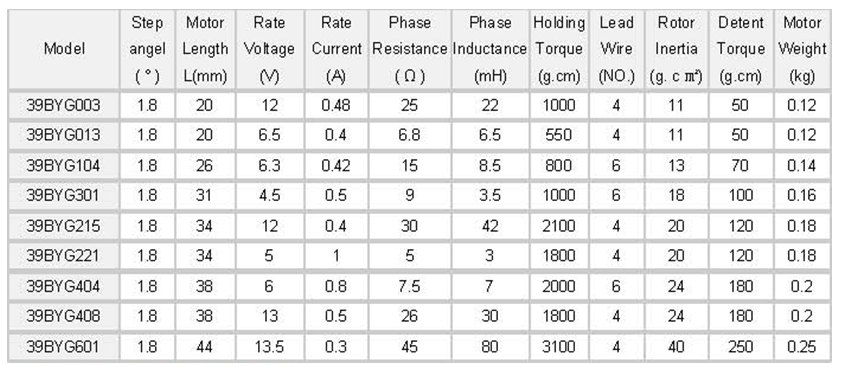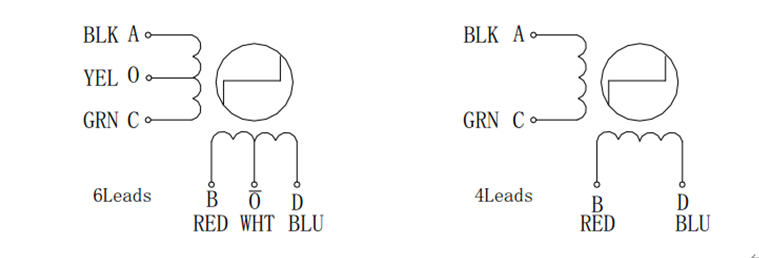Stepper motors are ubiquitous in the world of DIY projects, from 3D printers and CNC machines to camera sliders and robotic arms. Their precise control and ability to move in discrete steps make them a popular choice for applications that require accuracy and repeatability. However, selecting the right stepper motor for your DIY project can be a daunting task, given the multitude of options available in the market. In this comprehensive guide, we will delve into the intricacies of stepper motors, helping you make an informed choice for your next DIY endeavor.
Understanding Stepper Motors
Before delving into the selection process, it’s essential to have a fundamental understanding of how stepper motors work and their key characteristics.
How Stepper Motors Work
Stepper motors are electromechanical devices that convert electrical pulses into precise mechanical movements. Unlike traditional DC or AC motors, which spin continuously when powered, stepper motors move in discrete steps. These steps are achieved by energizing coils within the motor in a specific sequence. Each step corresponds to a fixed angle of rotation, known as the “step angle.” Common step angles include 1.8 degrees (200 steps per revolution) and 0.9 degrees (400 steps per revolution).
Key Characteristics
Step Angle: The step angle is a critical parameter as it determines the motor’s resolution. Smaller step angles provide finer control but may require more power to operate.

Holding Torque: Holding torque is the maximum static torque a stepper motor can exert when stationary. It’s essential for maintaining the motor’s position when not in motion.
Current Rating: The current rating specifies the amount of current the motor can handle without overheating. Higher current ratings generally result in more torque and better performance.
Voltage Rating: The voltage rating indicates the recommended voltage to operate the motor efficiently. It should match or be close to the power supply voltage in your project.
Physical Size: The motor’s physical dimensions, including its length and diameter, should fit within the constraints of your project.
Shaft Size and Configuration: The motor’s shaft size and configuration (single or double shaft) determine how you can attach components like pulleys or couplings.
Wiring Configuration: Stepper motors come in various wiring configurations, such as bipolar and unipolar. Your choice depends on your driver and controller setup.

Determining Your Project Requirements
To choose the right stepper motor, you must first understand your project’s specific requirements. Here are some questions to help you get started:
What’s the Application? Define the purpose of your project. Is it a 3D printer, CNC machine, or a robotic arm? Each application has unique requirements.
What’s the Load? Determine the weight and size of the objects the motor will move. Heavier loads require motors with higher torque ratings.
What’s the Speed Requirement? Consider how fast you need the motor to move. Stepper motors have different speed capabilities, and choosing the right one depends on your project’s speed requirements.
What’s the Accuracy Requirement? If precision is crucial, you may need a motor with a smaller step angle and higher resolution.
What’s the Environmental Conditions? Consider factors like temperature, humidity, and dust. Some motors are better suited for harsh environments than others.
Types of Stepper Motors
Stepper motors come in various types, each with its own advantages and disadvantages. Here are the most common types:
1. Bipolar Stepper Motors
Bipolar stepper motors have two coils, and the direction of current flow determines the motor’s rotation. They offer high torque and are suitable for applications where performance and accuracy are critical. However, driving bipolar motors can be more complex and require an H-bridge or specialized drivers.
2. Unipolar Stepper Motors
Unipolar stepper motors have a center-tapped coil for each phase, simplifying the control circuitry. They are easier to drive and are a good choice for beginners. However, they generally have lower torque compared to bipolar motors.
3. Hybrid Stepper Motors
Hybrid stepper motors combine the features of both bipolar and unipolar motors. They have multiple coils per phase, allowing for finer control and higher torque compared to unipolar motors. They are widely used in various applications.
4. Single-Stack vs. Double-Stack
Stepper motors can come in single-stack or double-stack configurations. Double-stack motors have two sets of coils and generally offer higher torque but may be longer and heavier. Single-stack motors are more compact but may have lower torque.
5. NEMA Sizes
Stepper motors are categorized into standard sizes known as NEMA sizes (e.g., NEMA 17, NEMA 23). These sizes refer to the mounting dimensions of the motor. Larger NEMA sizes typically have more torque but are also bulkier.
Calculating Torque Requirements
One of the critical considerations when choosing a stepper motor is determining the required torque to move your load. To calculate this, consider the following factors:
Load Weight: Determine the weight of the load the motor needs to move. This includes any attached components, such as pulleys or gears.
Load Inertia: Inertia refers to the resistance to changes in motion. Calculate the inertia of your load, including both rotational and linear components.
Desired Acceleration: Decide how quickly you want the load to accelerate or decelerate. Faster accelerations require more torque.
Friction and Efficiency: Account for any friction in the system and the motor’s efficiency. These factors can affect the torque required.
It’s essential to add a safety margin to ensure your motor can handle unexpected loads or variations in your project.
Matching Motor Specs to Project Requirements
Now that you have a better understanding of your project’s requirements and the types of stepper motors available, it’s time to match them up. Here’s how to do it:
1. Torque
Use the calculated torque requirement to narrow down your choices. Look for motors with a holding torque slightly higher than your calculated value to ensure reliable performance.
2. Step Angle
Choose a motor with an appropriate step angle. Smaller step angles provide finer resolution but may require more complex control systems. Larger step angles are more straightforward to control but offer lower precision.
3. Voltage and Current
Ensure that the motor’s voltage and current ratings match your power supply and driver capabilities. Running a motor at a lower voltage can result in reduced performance, while running it at a higher voltage can damage the motor.
4. Physical Size
Consider the physical dimensions of the motor. Ensure it can be installed in the machine.
5. NEMA Size
If you’re using a standardized mount or frame for your project, choose a stepper motor with a NEMA size that matches the mount. This simplifies the integration process.
6. Wiring Configuration
Select the appropriate wiring configuration (bipolar or unipolar) based on your driver and control setup. Ensure that the motor’s wiring matches your chosen configuration.
7. Environmental Considerations
If your project will operate in harsh conditions, such as extreme temperatures or high humidity, choose a motor designed for those environments. Some stepper motors come with protective features like sealed housings to prevent dust and moisture ingress.
8. Speed Requirements
Consider the speed at which your motor needs to operate. If your project requires high-speed movements, choose a motor with a higher RPM (rotations per minute) rating. Keep in mind that faster motors may generate less torque.
9. Resolution and Accuracy
For applications demanding precision, opt for a motor with a smaller step angle and higher resolution. This allows for finer control and more accurate positioning.
10. Driver and Controller Compatibility
Ensure that your chosen stepper motor is compatible with the driver and controller you intend to use. Check the voltage and current requirements to match the capabilities of your driver.
11. Budget
Stepper motors vary in price, so consider your budget when making a selection. Keep in mind that while cost-effective options may be tempting, they might not meet your project’s requirements.
12. Future Expansion
Think about future expansion or modifications to your project. Selecting a motor with some margin in terms of torque and performance can be beneficial if you plan to upgrade or expand your project later.
Testing and Prototyping
Before finalizing your selection, it’s a good practice to prototype or test your chosen stepper motor in your project’s environment. This can help identify any unforeseen issues and ensure that the motor meets your expectations.
Load Testing: Attach your motor to the load and perform load tests to confirm that it can handle the required torque and speed.
Control System: Test your motor with the chosen driver and controller to verify that they work seamlessly together.
Environmental Conditions: If your project operates in extreme conditions, conduct tests to ensure the motor can withstand those conditions without performance degradation.
Accuracy and Precision: Verify that the motor can achieve the required accuracy and precision for your project’s needs.
Stability and Reliability: Run tests over an extended period to assess the motor’s stability and reliability in real-world conditions.
Conclusion
Choosing the right stepper motor for your DIY project is a critical decision that can significantly impact the success of your endeavor. By understanding your project’s requirements, carefully matching motor specifications, and conducting thorough testing, you can make an informed choice. Remember that there is no one-size-fits-all solution, and the ideal stepper motor will depend on the unique demands of your project. With the knowledge gained from this comprehensive guide, you’re better equipped to select the perfect stepper motor for your next DIY venture, whether it’s a 3D printer, CNC machine, or any other exciting project.

